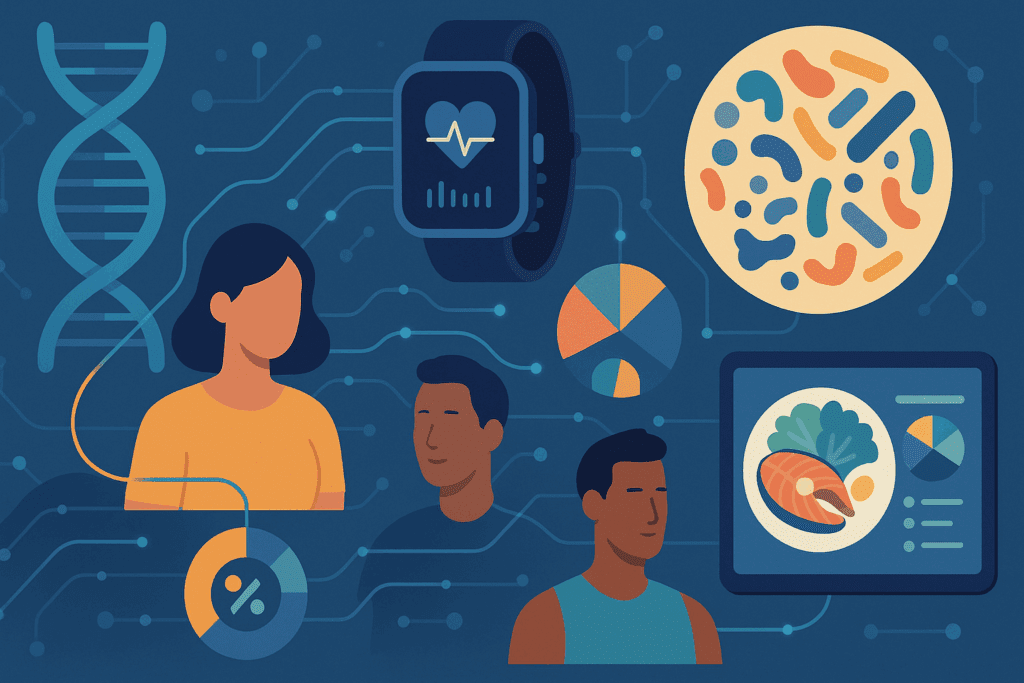Long before the keto diet became a household name among health enthusiasts, it began as a highly specific medical intervention. While many associate the keto lifestyle with modern fitness influencers or weight-loss trends on social media, the truth is rooted in a deep medical history. To understand the question, “what year was the keto diet” and analyze “when was keto popular,” we must journey through nearly a century of scientific exploration, clinical applications, and cultural reinventions.
You may also like: Is the Keto Diet Safe or Dangerous? What Experts Say About the Risks, Benefits, and Basics of the Ketogenic Diet

The Origins of Ketosis and the Medical Birth of Keto
The origins of the ketogenic diet trace back to the early 1920s. During this time, physicians were urgently seeking dietary solutions for childhood epilepsy, particularly for patients who were resistant to drug therapies. Researchers had already observed that fasting led to a significant reduction in seizure frequency, but prolonged fasting was neither sustainable nor nutritionally sound. Enter Dr. Russell Wilder of the Mayo Clinic, who, in 1921, introduced what we now call the ketogenic diet. This diet mimicked the metabolic effects of fasting by triggering the body to enter a state of ketosis—a natural process in which the body shifts from using glucose to fat as its primary energy source.
Answering the question “what year was the keto diet” leads us directly to this moment in 1921, when the ketogenic approach was first formalized for medical use. The original intent was far from weight loss; instead, it was developed as a clinical tool to reduce seizure episodes in epileptic children. By shifting the body into a state where ketone bodies became the predominant fuel, patients often saw remarkable improvements. The therapeutic success was so notable that the keto diet remained a gold standard treatment for epilepsy well into the 1940s.
The Quiet Decades: A Dormant Yet Persistent Therapy
While the 1920s marked the official beginning, the ketogenic diet did not immediately flourish as a mainstream therapeutic strategy. With the advent of modern anti-epileptic medications in the mid-20th century, interest in dietary approaches waned. The convenience and effectiveness of pharmaceutical treatments largely displaced the need for strict dietary compliance, and keto slowly faded from public view.
However, despite its decline in popularity, keto never truly disappeared. Select medical institutions, particularly those specializing in pediatric epilepsy, continued to use the diet when medications failed. Hospitals such as Johns Hopkins helped preserve and refine ketogenic protocols through the decades. During this time, medical researchers quietly amassed a growing body of evidence supporting keto’s safety and efficacy, even if it remained in the background of medical practice.
The late 20th century also saw a subtle shift in how dietary fats and carbohydrates were viewed in the broader public. The low-fat diet craze of the 1980s, bolstered by questionable interpretations of early nutritional studies, created an environment that was resistant to high-fat eating patterns. Still, under the surface, ketogenic therapies were being quietly applied in clinical settings, setting the stage for a remarkable resurgence in the 21st century.

The Resurgence: When Was Keto Popular Again?
The revival of the ketogenic diet began in earnest during the early 2000s, catalyzed by a combination of scientific findings and personal stories that captured public imagination. Perhaps one of the most pivotal moments was the 1994 airing of a Dateline NBC segment featuring Charlie Abrahams, the son of Hollywood producer Jim Abrahams. Charlie suffered from severe, medication-resistant epilepsy, and it was only after implementing the ketogenic diet—under medical supervision—that his seizures dramatically subsided. The resulting publicity prompted the creation of the Charlie Foundation, which significantly expanded public awareness and medical interest in ketogenic therapies.
From this point onward, ketogenic nutrition began crossing the boundaries of clinical treatment and entering the realm of popular wellness. By the early 2010s, a new wave of books, blogs, and research began reintroducing keto to a public increasingly dissatisfied with conventional low-fat, high-carb dieting. Fitness professionals, celebrity endorsements, and social media influencers further amplified its appeal.
So, when was keto popular again? The answer is nuanced but becomes especially clear around 2016 to 2019, when Google searches for “keto diet” skyrocketed, grocery store shelves began featuring keto-branded products, and mainstream publications began covering its supposed benefits for weight loss, cognitive performance, and even metabolic health. The question “when was keto popular” points directly to this period, where keto evolved from niche intervention to a full-blown health trend.

Weight Loss and the Keto Transformation
Unlike its medical origins, the modern-day popularity of keto is largely anchored in its perceived effectiveness for weight loss. As obesity rates climbed and public trust in traditional dieting eroded, keto emerged as a compelling alternative. Its appeal was multifaceted: rapid initial weight loss due to water excretion, reduced appetite, steady energy levels, and the promise of eating bacon without guilt.
The ketogenic diet’s emphasis on extremely low carbohydrate intake—typically below 50 grams per day—forces the body into a state of ketosis. Once in ketosis, the body burns fat as its primary fuel source, a metabolic shift that many dieters found both empowering and effective. Unlike calorie-restriction diets that often induce hunger and fatigue, many keto followers report feeling satiated and energized.
This sense of metabolic liberation contributed significantly to the diet’s viral popularity. Social media became a powerful engine for spreading keto success stories. Before-and-after photos, meal prep ideas, and keto-friendly recipes flooded platforms like Instagram and Pinterest. Influencers shared blood ketone measurements, daily macronutrient logs, and tips for avoiding the dreaded “keto flu.”
The question “when was keto popular for weight loss” has a clear answer in this context: the latter half of the 2010s saw the diet become synonymous with body transformation. This period was also marked by the rise of ketogenic cookbooks, keto meal delivery services, and even specialized apps to help users track ketosis and optimize fat-burning.

Scientific Support and Skepticism
As keto gained widespread attention, the scientific community responded with a surge of research exploring its benefits and limitations. Studies confirmed that ketogenic diets could be effective for short-term weight loss, improvements in insulin sensitivity, and even reduction in triglycerides and other cardiovascular risk markers. Some trials also suggested benefits for patients with type 2 diabetes, neurodegenerative disorders, and polycystic ovary syndrome (PCOS).
Yet, this wave of popularity was not without its critics. Many nutrition experts cautioned against the long-term sustainability and safety of extreme carbohydrate restriction. Some studies indicated that adherence to keto was difficult over extended periods and that rebound weight gain was common once individuals resumed typical eating patterns. Others raised concerns about micronutrient deficiencies, gastrointestinal side effects, and elevated cholesterol levels in some individuals.
Nevertheless, many clinicians acknowledged the diet’s potential when applied judiciously and under medical supervision. The importance of individualized nutrition became a central theme in the evolving conversation. Keto, in its best form, was increasingly viewed not as a one-size-fits-all solution, but as a tool in the broader context of personalized wellness strategies.

Evolution of the Modern Keto Lifestyle
While early versions of the ketogenic diet were rigidly clinical, today’s interpretations have taken on a much more diverse and adaptable character. This evolution is evident in the emergence of subtypes such as “lazy keto,” which prioritizes keeping carbs low without strict tracking of protein or fat; “clean keto,” which emphasizes whole, nutrient-dense foods; and “dirty keto,” which allows processed, high-fat foods as long as they remain low in carbs.
This diversification of approaches reflects the changing goals and demographics of the keto audience. For many, keto is less about achieving medical ketosis and more about controlling blood sugar, reducing inflammation, or avoiding food cravings. While the question “what year was the keto diet” grounds us in its historical origins, its present-day applications are multifaceted and constantly evolving.
The keto diet has also inspired a vast commercial ecosystem. From exogenous ketone supplements to MCT oils, collagen powders, and keto snack bars, the marketplace has adapted to meet the demands of a growing keto-conscious public. Restaurants offer keto-friendly options, food labels now highlight net carbohydrates, and wearable tech helps users monitor ketosis in real-time.
What was once a specialized medical protocol has transformed into a lifestyle movement, complete with its own culture, language, and digital community. This transformation is a testament to both the diet’s adaptability and the public’s hunger for effective nutritional alternatives.
Keto Beyond Weight Loss: Expanding Therapeutic Horizons
Beyond weight management, the ketogenic diet has gained traction in other areas of preventive and therapeutic health. Clinical trials have investigated its use in managing type 2 diabetes, with promising results showing improved glycemic control and reduced dependence on medications. Some researchers are exploring its role in oncology, based on the hypothesis that many cancer cells thrive on glucose, and therefore may be more vulnerable in a low-carbohydrate environment.
Neuroscience has also shown interest, particularly in diseases like Alzheimer’s and Parkinson’s. Preliminary findings suggest that ketones may provide a more efficient energy source for damaged neurons, potentially slowing cognitive decline. Although more research is needed, the therapeutic potential of keto extends far beyond epilepsy and weight loss.
These emerging applications have reinforced the keto diet’s legitimacy in the scientific community and helped distinguish it from fleeting dietary fads. The evidence base continues to grow, underscoring the value of ketogenic strategies in contexts where traditional nutritional advice may fall short.
Navigating the Challenges of Long-Term Keto Adherence
Despite its benefits, the ketogenic lifestyle is not without challenges. Adhering to such a restrictive dietary pattern requires considerable planning, willpower, and nutritional literacy. Social events, dining out, and travel can become sources of stress for those attempting to maintain ketosis.
Moreover, some individuals experience side effects such as constipation, nutrient imbalances, or what is colloquially known as the “keto flu”—a collection of symptoms like fatigue, headache, and irritability that can occur as the body adapts to ketosis. These issues, while often temporary, can dissuade newcomers from continuing the diet.
Healthcare providers and dietitians often recommend gradual transitions into keto or modified versions that prioritize whole foods and fiber intake. Periodic medical monitoring may be appropriate, particularly for those with underlying health conditions or those taking medications that affect blood sugar or electrolyte balance.

The Future of Keto: Personalized Nutrition and Scientific Refinement
As the field of nutritional science advances, we are moving toward a future of increasingly personalized dietary recommendations. Genetic testing, microbiome analysis, and metabolic profiling are tools that may help determine who is most likely to benefit from a ketogenic approach. Rather than prescribing keto as a universal solution, experts are beginning to tailor interventions to individual needs, preferences, and physiological responses.
This scientific refinement is essential for ensuring that keto maintains its credibility and effectiveness in the long term. Future research will likely focus on optimizing macronutrient ratios, identifying biomarkers for keto responsiveness, and developing strategies to mitigate potential risks. In this way, the ketogenic diet is not static, but a dynamic and evolving field of study.
The surge in popularity over the past decade also highlights the importance of responsible media coverage and public health education. While keto has empowered many to take control of their health, misinformation and oversimplified claims can undermine its value. Moving forward, clear, evidence-based guidance from credentialed professionals will be critical to ensuring that the benefits of keto are accessible, sustainable, and safe.
Frequently Asked Questions (FAQ): How the Keto Craze Began
1. Why did the ketogenic diet fall out of favor after its initial medical success?
After its introduction in 1921, the ketogenic diet gained medical attention for managing pediatric epilepsy. However, by the 1950s and 1960s, pharmaceutical advancements, such as the development of anticonvulsant drugs like phenytoin and valproate, began to overshadow dietary approaches. These medications offered more immediate and less restrictive options for seizure control. As public health narratives shifted toward low-fat dietary guidelines in the late 20th century, interest in high-fat regimens waned even further. While the question “what year was the keto diet” highlights its origin, its temporary obscurity reflects changing medical priorities rather than evidence of ineffectiveness.
2. How has modern food technology supported the return of keto-friendly eating?
The resurgence of keto owes much to innovations in food manufacturing. Unlike earlier eras, where following a ketogenic plan required meticulous home preparation, modern consumers have access to an expanding market of keto-labeled foods. These include snacks with reduced net carbs, meal replacement shakes containing MCT oil, and even frozen entrees formulated for ketosis. This development made it significantly easier for the diet to transition from clinical use to mainstream popularity. When we reflect on “when was keto popular” in a commercial sense, it coincides with this technological leap in convenience foods around 2016.
3. Are there cultural or psychological reasons why keto appeals to modern dieters?
Yes, beyond its metabolic effects, the keto diet resonates with cultural values of control, performance, and self-optimization. In an era increasingly driven by biohacking, productivity, and anti-aging trends, keto offers a lifestyle identity that extends beyond food. Adherents often describe increased mental clarity and focus—benefits that tap into the psychological appeal of empowerment. The diet’s strict rules and measurable outcomes, such as blood ketone levels, create a sense of structure in a world full of dietary ambiguity. This is one reason why “when was keto popular” intersects with broader wellness movements, not just weight loss alone.
4. How does the year of keto’s origin influence its credibility today?
Understanding what year was the keto diet created—1921—helps anchor the diet in a century-long tradition of medical use. This history lends a level of credibility that many fad diets lack. Because keto was not invented by marketers but developed by medical researchers at the Mayo Clinic, its foundation is rooted in clinical science rather than commercial speculation. This historical grounding reinforces the diet’s legitimacy, especially among educated consumers who value evidence-based practices. Modern applications of keto benefit from this origin story, giving it a unique position among dietary strategies.
5. What factors contributed to keto’s viral explosion in the late 2010s?
Several forces converged to create the perfect storm for keto’s modern boom. The rise of influencer marketing, the emergence of social media platforms focused on visual transformation (like Instagram), and widespread disillusionment with conventional dieting all played a role. Moreover, growing interest in insulin resistance, prediabetes, and metabolic syndrome drew scientific and lay attention toward low-carb solutions. It was during this period, roughly 2016 to 2019, that “when was keto popular” became a query with global relevance, as Google Trends data and product sales reflected explosive interest.
6. Are there benefits of keto for people who are not trying to lose weight?
Absolutely. While many start keto for weight loss, others adopt it for neurological, metabolic, or cognitive benefits. Preliminary research suggests that a ketogenic state may enhance mitochondrial efficiency in brain cells, potentially aiding focus, memory, and mood. Some individuals use keto intermittently to manage conditions like polycystic ovary syndrome (PCOS), migraines, or inflammatory disorders. Understanding what year was the keto diet introduced helps us appreciate that its therapeutic roots predate its modern image as a fat-loss tool.
7. How has the keto movement impacted the way we view dietary fat?
The rise of keto helped challenge the long-standing demonization of dietary fat, a concept deeply ingrained since the 1980s. Keto encourages the consumption of healthy fats, including avocados, nuts, olive oil, and grass-fed butter, highlighting their role in satiety and hormone regulation. This paradigm shift has led to more balanced public conversations around macronutrients. The diet’s popularity also fueled demand for updated food labeling, such as net carb content and MCT oil sourcing. When exploring “when was keto popular,” we see that it played a pivotal role in rehabilitating fat’s reputation in mainstream nutrition.
8. How do modern biohacking tools intersect with ketogenic practices?
Devices such as continuous glucose monitors (CGMs), ketone breath analyzers, and biometric wearables have become popular among keto followers. These tools allow users to track real-time metabolic responses to meals, exercise, and sleep, thereby fine-tuning their dietary habits. This synergy has elevated keto beyond a food plan to a data-driven wellness regimen. Such integration appeals to tech-savvy health enthusiasts who value personalized feedback loops. While pondering what year was the keto diet created, it’s remarkable to see how a century-old therapy now merges seamlessly with cutting-edge digital health.
9. Could future versions of keto be more personalized than today’s standard plans?
Yes, the future of keto is expected to evolve toward greater individualization. Genetic testing and gut microbiome analyses are beginning to inform how different people respond to macronutrient profiles, including fat and carb metabolism. Emerging fields like nutrigenomics may guide adjustments in the ratio of fats to proteins or the inclusion of cyclical carb refeeds. The baseline understanding of “what year was the keto diet” may soon be supplemented by questions like “what version of keto fits your DNA?” As research deepens, keto could become one of the most personalized dietary frameworks available.
10. What are some potential long-term societal impacts of the keto movement?
The ketogenic wave has already influenced agricultural policies, food production, and healthcare approaches to chronic disease. As demand for low-carb produce grows, we may see more regenerative farming practices that focus on omega-3-rich livestock and sustainable fats. On a broader level, public health strategies may begin to include ketogenic cycles as preventive measures against diabetes and metabolic dysfunction. Schools, hospitals, and meal delivery services are increasingly offering keto options, reflecting its normalization. The question “when was keto popular” captures a moment in history, but the ongoing ripple effects suggest that keto’s legacy may shape dietary landscapes for generations to come.
Reflecting on the Journey: The Legacy and Lessons of Keto
In tracing the arc of the ketogenic diet’s history, it becomes clear that this is more than just a trend. From its clinical roots in 1921 to its modern resurgence, the diet has evolved through rigorous scientific exploration, public curiosity, and an ever-changing health landscape. When we ask “what year was the keto diet” or “when was keto popular for weight loss,” we are really asking how ideas travel across time, how science intersects with culture, and how individuals respond to changing narratives around food and health.
The ketogenic diet’s journey reflects a broader shift toward more individualized, evidence-based approaches to wellness. Its enduring popularity underscores a collective desire for alternatives that not only work but align with modern lifestyles. As with all powerful tools, its impact depends on how it is used—thoughtfully, responsibly, and with a clear understanding of both its strengths and limitations.
Ultimately, keto is a reminder of how a century-old therapeutic strategy can resurface to meet the challenges of a new generation. Whether pursued for medical reasons, metabolic health, or body composition, its effectiveness depends not just on fat-to-carb ratios, but on the quality of guidance, the commitment of the user, and the integrity of the science that supports it.
Further Reading:
The Keto Diet: Its History and What You Need to Know


